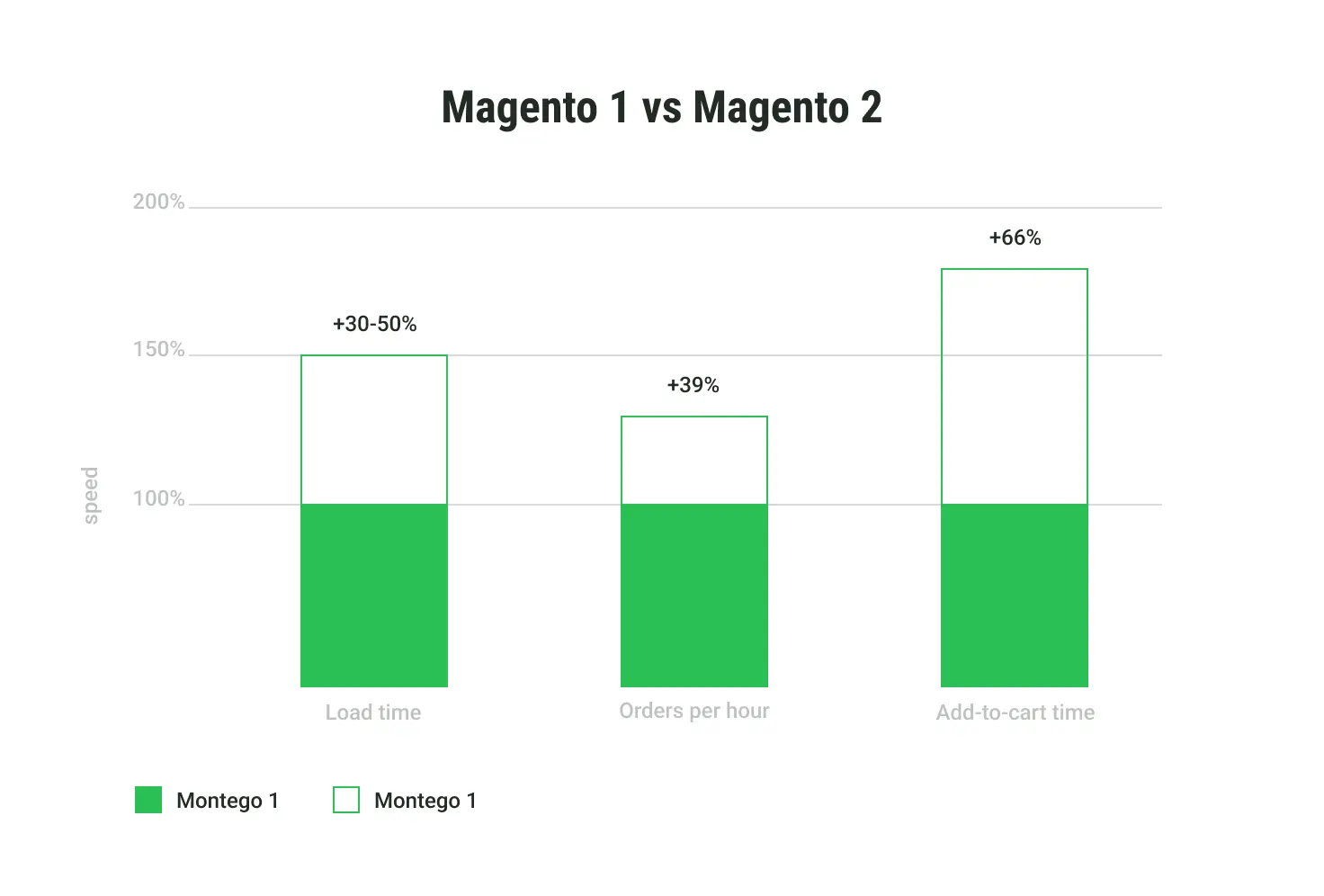Table of contents
How to Build a Magento Website: Technical Side, Business Recommendations & Cost Estimation
With over 267,000 Magento 1 and Magento 2 stores live on the internet, the Magento E-commerce platform emerges as a top choice among industry leaders when it comes to creating a feature-rich, high-performing online store.
Read on to explore the technical intricacies, business recommendations, and cost estimation involved in building a Magento website.
If you are looking for expert support with website creation or full cycle development for your E-commerce business, get in touch with the Emerline team for a consultation. We have been helping companies for over 12 years and are ready to assist you.
Why Create an Online Store with Magento
Magento is a leading open-source E-commerce platform trusted by hundreds and thousands of businesses worldwide. Its reputation for scalability, flexibility, and a vast array of features makes it the go-to solution for businesses seeking to establish their digital presence. Magento is trusted by some of the biggest names in the world, including Coca-Cola and Ford, with 2020 Magento users being in the Internet Retailer Top 1000 list.
Magento offers a plethora of features that cater to the diverse needs of E-commerce businesses. With robust product catalog management, advanced SEO capabilities, and an intuitive admin interface, it enables you to showcase your products effectively and enhance the shopping experience.
How to Choose the Right Platform Version for Your Magento Website
When embarking on your Magento journey, selecting the appropriate platform version for your E-commerce venture is a pivotal decision that can greatly influence the success of your online store. To make the right choice, consider factors like business size, budget, hosting preferences, and the complexity of your E-commerce needs. By aligning these factors with the unique features of each version, you can confidently select the version that suits your business strategy and growth objectives.
Adobe Commerce, the renowned E-commerce platform, acquired Magento in 2018 for $1.68B, and it currently offers three distinct versions, each tailored to cater to diverse business needs. Let’s take a look at all three of them.
Magento Open Source
Magento Open Source is the most used version as it’s absolutely free to use. It offers complete code access and flexibility for customization and supports a wide range of third-party extensions and integrations, enabling businesses to extend functionality and tailor their E-commerce site. It’s well-suited for small to medium-sized businesses with limited budgets.
Adobe Commerce
Adobe Commerce, formerly known as Magento Commerce, offers various features and additional Magento support. These include robust product catalog management, extensive marketing tools, and access to an extensive extension marketplace. It also grants you full control over server hosting and the codebase, allowing for extensive customization to meet specific business needs. With a focus on high performance and scalability, Adobe Commerce is suitable for growing businesses. However, unlike Magento Open Source, Adobe Commerce is a paid version.
Adobe Commerce Cloud
Adobe Commerce Cloud is a cloud-hosted solution providing all the services that the previous versions have. It also runs on Amazon Web Services, which means you don’t have to pay additional fees for hosting. It offers advanced marketing automation, customer segmentation, and content staging capabilities, empowering businesses to craft personalized and engaging shopping experiences for their customers. Adobe Commerce Cloud caters to both Business-to-Business (B2B) and Business-to-Consumer (B2C) operations, but the annual costs can be quite hefty, making it more suitable for enterprise-level companies.
Why Do Companies Prefer Magento 2?
Magento 2 has become the preferred E-commerce platform for businesses worldwide due to the significant advantages it has over Magento 1. It offers enhanced performance, with faster page loading times critical for retaining customers, better mobile responsiveness, and a streamlined checkout process that reduces cart abandonment rates, while improved security features safeguard customer data and transactions.
Magento 2 has a 30 to 50 percent faster load time, can handle up to 39 percent more orders per hour than Magento 1, has 66 percent faster add-to-cart times, and can give near-instant server response times for catalog browsing with the right hosting setup.
Magento 2's user-friendly admin interface also simplifies daily operations, and its extensive extension marketplace allows for easy customization. Long-term support and updates from Adobe provide reassurance, making Magento 2 a compelling choice for businesses aiming to excel in the competitive E-commerce landscape.
The Process of Creating an E-Commerce Website with Magento
Creating a website sounds like a lot of work and sleepless nights. But trust me, it’s not as daunting as it looks. Not with Magento, at least. Here are some steps that you can follow to get your E-commerce store up and running with Magento 2.
1. Planning and Strategy
Define your E-commerce goals, target audience, and unique selling proposition (USP). Conduct market research to understand your competitors and customer preferences. Create a comprehensive business plan that outlines your product offerings, pricing strategy, and marketing approach. This initial planning phase sets the foundation for your Magento E-commerce website.
2. Design and User Experience
88% of online consumers are less likely to return to a website after a bad experience. This emphasizes the importance of having a seamless shopping experience in your store. Design plays a vital role in attracting and retaining customers. Choose a visually appealing and user-friendly website design that aligns with your brand. Magento offers a range of customizable themes and templates. Ensure that the design is responsive, meaning it adapts to various devices, including smartphones and tablets, to provide a seamless browsing experience.
3. Development and Customization
Leverage Magento's robust development capabilities to build your E-commerce website. This step involves setting up the website infrastructure, including product catalog management, payment gateways, and inventory tracking. Customize your website to incorporate specific features like search functionality, customer reviews, and related product recommendations. Magento's open-source nature allows for extensive customization and integration with third-party services.
4. Content and Product Management
Populate your Magento E-commerce website with high-quality content and product listings. Create engaging product descriptions, high-resolution images, and informative videos if applicable. Implement effective categorization and tagging systems to make it easy for customers to find products. Consider implementing SEO best practices to improve your website's visibility in search engine results. Effective SEO can lead to a 14.6% conversion rate, highlighting the significance of optimizing your product listings and content.
5. Testing and Quality Assurance
Rigorous testing is crucial to ensure that your website functions flawlessly. Test various aspects, including functionality, performance, security, and user experience. Identify and rectify any issues or bugs to guarantee a smooth shopping experience for your customers. Pay attention to payment processing, cart functionality, and page load times.
Magento 2 Website Development Costs
Creating a Magento 2 website represents a substantial investment in establishing a robust online presence. The cost of developing such a website can vary significantly, depending on numerous factors. The project's scope is a primary determinant, followed by the Adobe version you choose, the complexity of the website, the extent of customization required, and the number of products or services to be offered.
On average, a mid-sized Magento 2 website project can cost between $20,000 and $50,000 for development, excluding ongoing maintenance and marketing expenses. Hosting expenses typically fall in the range of $20 to $1,500 per month, depending on your hosting provider and plan.
Accurately estimating the cost of developing a Magento 2 website requires careful consideration of project-specific needs and goals. Balancing the desired features with available resources is key to ensuring a successful and cost-effective Magento 2 website development project.
How to Build a Successful Online Store
Building a successful online store is a multifaceted endeavor that demands careful planning, strategic execution, and continuous refinement. Magento stands out as a robust choice for businesses aiming to establish a powerful online store.
However, it's essential to carefully plan your E-commerce journey, consider development costs, and implement effective strategies for success. It's advisable to collaborate with experienced professionals who can provide guidance and expertise in tailoring the project to your business requirements and budget constraints.
Embarking on an E-commerce venture with Magento may require an initial investment, but the potential for growth and success is substantial. By aligning your technical endeavors with sound business strategies, you can create a thriving online store that captivates customers and drives revenue in the competitive world of E-commerce.
Update: January 31, 2024




